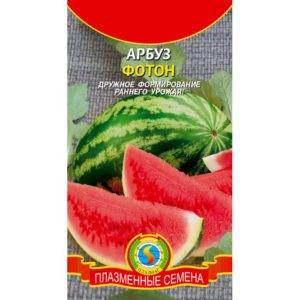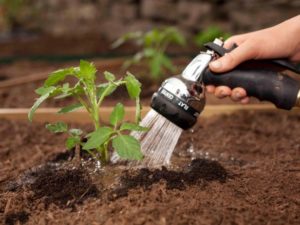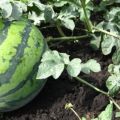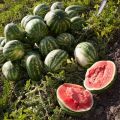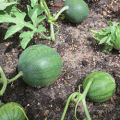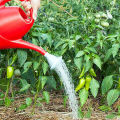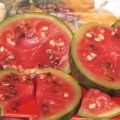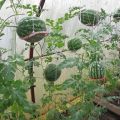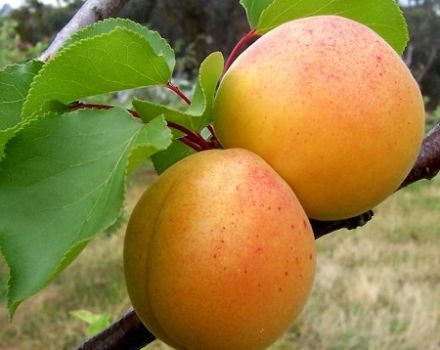Is it possible to spray watermelons with boric acid as a top dressing, processing rules
Seeing the endless fields on which the melon crop is ripening, summer residents are trying to grow sweet fruits in their area. If the seeds get into wet and cold ground, they simply won't germinate. Even when sprouts appear, it is not a fact that melons and watermelons will ripen. In addition to sun and warmth, these plants need nutrients. Delicate leaves curl when aphids appear, die from fungi and bacteria. Is it really possible to spray watermelons with boric acid, summer residents ask when they hear that the antiseptic that is used in the household also performs the functions of an insecticide.
What is boric acid
A colorless substance, which is naturally found in mineral springs, is artificially obtained by mixing borax with hydrogen chloride, resembles scales in appearance, has no smell, and has a layered lattice.
Boric acid is used in medicine for disinfection, in the food industry, as an additive, in nuclear reactors, in foundry and ceramic production. White powder destroys cockroaches and ants, with its help they cope with bedbugs, in agriculture they use it as fertilizer.
What is useful for watermelon
In order to grow tasty and large fruits, at each stage of growth, the melons must be fed. If a plant is deficient in any trace element, it develops poorly and gives an inadequate yield.
One of the simple and inexpensive mineral fertilizers is boric acid, which is used:
- while sowing seeds;
- to strengthen seedlings;
- during flowering and ovary formation.
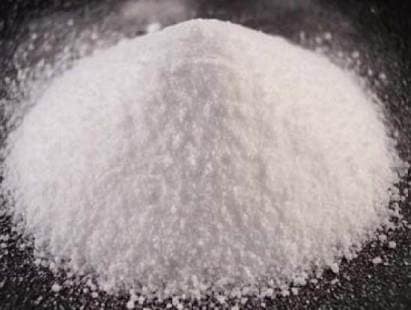
The main element of the substance is boron, which is involved in all processes that occur in horticultural and melon crops, accelerates their growth and development, helps to absorb calcium, delivers sugar to the leaves, improves root formation, and helps plants adapt to the external environment.
Feeding with boric acid allows you to increase the size of watermelons, since it stimulates the formation of flowers and ovaries, and directly affects the amount of chlorophyll.
Signs of a lack or excess of boron in watermelons
The lack of trace elements negatively affects the condition of plants. The growth of melons and gourds slows down, the leaves bend, acquire a whitish hue and dry out if they lack boron.
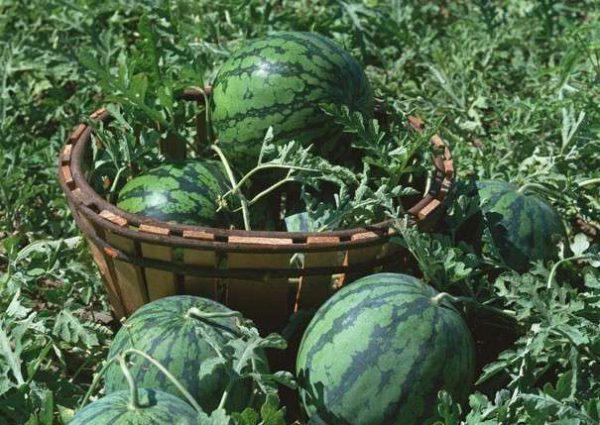
With a component deficiency:
- Flowers are showered.
- The stems die off.
- The ovary does not develop.
Watermelons, if ripe, are light in weight and have no taste. With an excess of boron, the culture grows poorly, suffers from toxicosis. The trace element accumulates in the leaves, this leads to the fact that they turn yellow and curl, the fruits do not develop, but dry up.
If watermelons get enough phosphorus and calcium, the boron toxicity limit increases.
When the indicator of its presence in the soil is exceeded up to 30 milligrams per 1 kilogram, melons and gourds begin to hurt.
Preparing boric acid feed at home
Of all chemical compounds, the substance that is obtained from hydrogen chloride and borax brings the least harm to plants. When concentrated, it gives the leaves a bright green tint, adds sweetness to watermelons.

Boric acid, which is often sold as a powder, must first be poured into a small amount of hot water and stirred until no sediment remains. The concentrated solution is diluted and used for feeding.
So that the seeds of watermelons germinate faster and take root better, they are soaked for 12 hours, having prepared a remedy from 5 grams of the substance and 5 liters of water.
Before flowering and forming the ovary, the same amount of boric acid is taken, and 10 liters of liquid. The culture is sprayed a second time a week later. One teaspoon holds 5 grams of powder, 1 gram is a quarter of it. If the antiseptic is used with other ingredients, the concentration is approximately halved.
Methods for feeding plants with boric acid
The substance serves not only as a mineral fertilizer, but also as a growth stimulant. Seeds are soaked in its solution. For melons and gourds, foliar feeding is more suitable, since the result is noticeable almost immediately, the composition falls directly on the leaves. Before sowing and planting in open ground, the area is watered by stirring 5 grams of powder in a bucket of water. A liter of solution is used per square meter. Land cultivation is carried out to prevent boron deficiency.
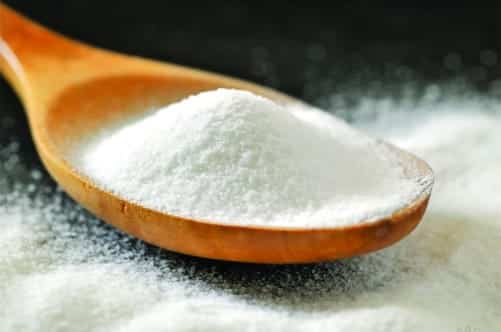
Root dressing
If the watermelons grow slowly, bend, their leaves turn white, the ovary falls off, the stems dry out, this may indicate that the plants lack boron, since the land is infertile, and this component is present in it in insufficient quantities.
In this case, root feeding is recommended. Plants must first be watered, and then treated with a composition with boric acid. Two tenths of a gram of powder are stirred in a liter of hot water, the solution is used in a cooled form.
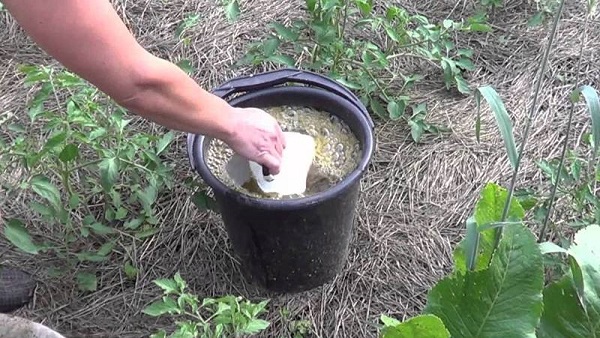
This method of feeding is effective if the watermelons are planted on podzolic or sandy soil.
Foliar
When spraying melons and gourds, flowers are preserved, the ovary crumbles less, the yield increases by at least 20%, and larger fruits grow.
In addition to soaking the seeds, foliar feeding watermelons with the use of boric acid is carried out several times per season, namely:
- when buds appear;
- at the beginning of the appearance of flowers;
- during ripening.
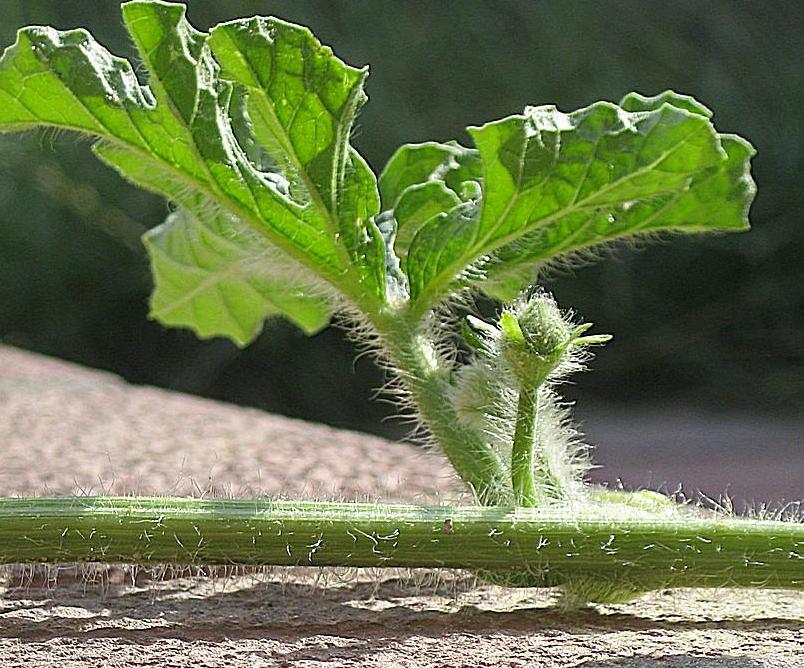
The spray solution is prepared at the rate of 1 gram of powder per liter of water. Spray the composition on both the inside and outside of the leaves. After such treatment, melons and gourds are less sick.
Application errors
To make watermelons happy with the harvest, you need to learn how to use and dilute boric acid correctly. Many summer residents complain that treatment with such a tool did not bring the desired result.
This happens for a variety of reasons, but mainly:
- Increased concentration is applied.
- The composition is not prepared correctly.
- The solution is not distributed over the entire surface of the leaves.

Crystals do not stir in cold water, but settle to the bottom. When spraying with this agent, the plant can be burned.Unlike phosphorus or nitrogen, when spraying, boron does not fall on the inside of the bush, so you need to process the leaves on both sides.
Subject to all the requirements for the preparation of the composition, the correct concentration of the main substance, the yield of watermelons increases by at least 20%.
- It is necessary to spray melons and gourds in the evening or during the day, when there is no sun and it is cloudy.
- A spray for use in the garden or vegetable garden is selected with a fog effect.
- Young plants need to be processed over the entire surface of the leaves, paying attention to the growth.
- Do not take more than a gram of acid powder per liter of water.
In specialized retail outlets, you can buy fertilizers that contain boron. Ripe watermelon has a low calorie content, pleasant taste. With its use, thirst passes, toxins and toxins are removed from the body. The sweet berry is rich in folic acid, which is necessary for women carrying a baby with anemia. Watermelon eliminates edema, decoctions are prepared from the crusts of a ripe fruit, which alleviate the condition with rheumatism and colitis. The seeds are used in the fight against worms.
